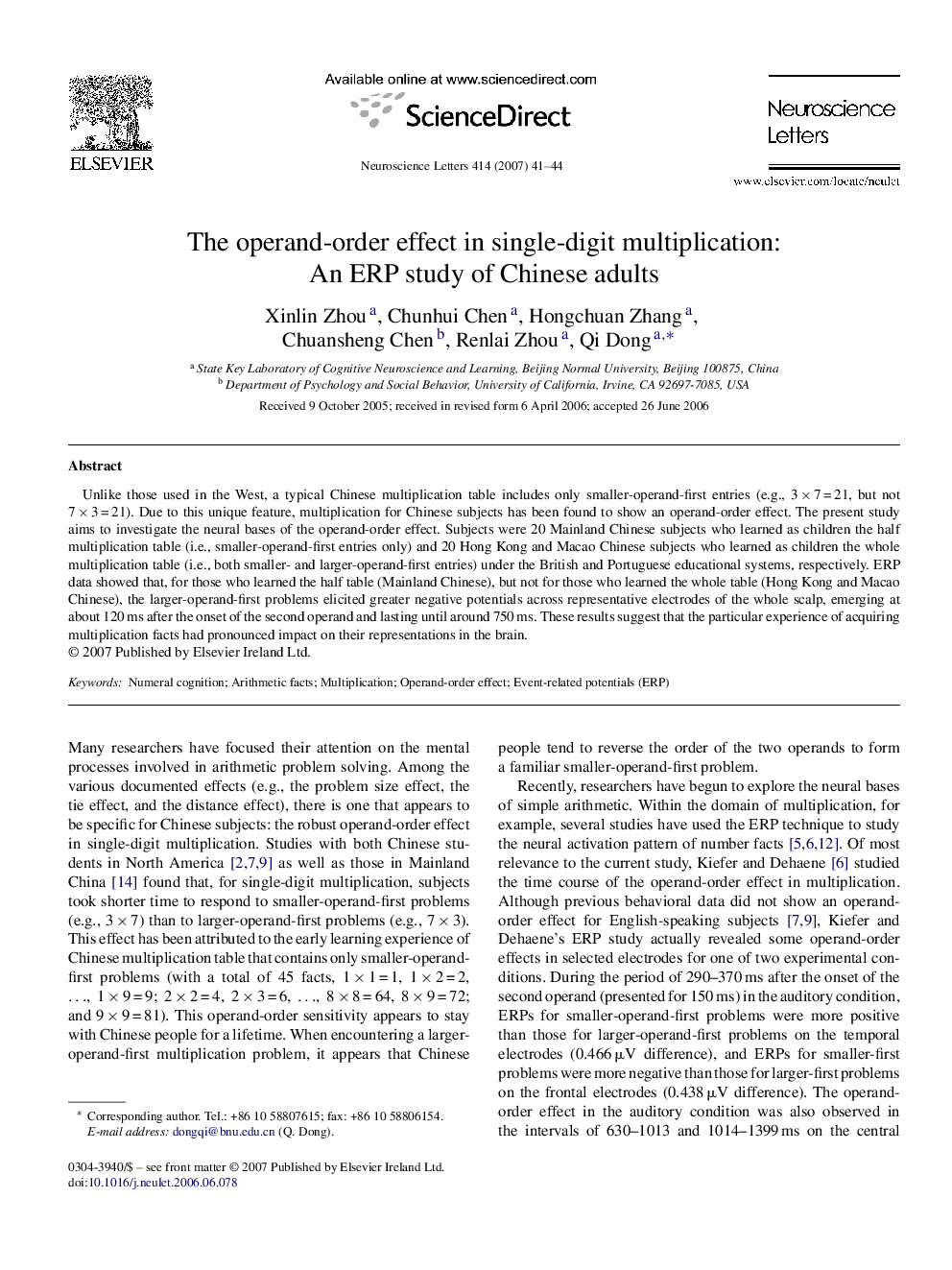| کد مقاله | کد نشریه | سال انتشار | مقاله انگلیسی | نسخه تمام متن |
|---|---|---|---|---|
| 6285907 | 1296960 | 2007 | 4 صفحه PDF | دانلود رایگان |

Unlike those used in the West, a typical Chinese multiplication table includes only smaller-operand-first entries (e.g., 3Â ÃÂ 7Â =Â 21, but not 7Â ÃÂ 3Â =Â 21). Due to this unique feature, multiplication for Chinese subjects has been found to show an operand-order effect. The present study aims to investigate the neural bases of the operand-order effect. Subjects were 20 Mainland Chinese subjects who learned as children the half multiplication table (i.e., smaller-operand-first entries only) and 20 Hong Kong and Macao Chinese subjects who learned as children the whole multiplication table (i.e., both smaller- and larger-operand-first entries) under the British and Portuguese educational systems, respectively. ERP data showed that, for those who learned the half table (Mainland Chinese), but not for those who learned the whole table (Hong Kong and Macao Chinese), the larger-operand-first problems elicited greater negative potentials across representative electrodes of the whole scalp, emerging at about 120Â ms after the onset of the second operand and lasting until around 750Â ms. These results suggest that the particular experience of acquiring multiplication facts had pronounced impact on their representations in the brain.
Journal: Neuroscience Letters - Volume 414, Issue 1, 27 February 2007, Pages 41-44